Shuyu Sun
Zero-Shot Digital Rock Image Segmentation with a Fine-Tuned Segment Anything Model
Nov 17, 2023Abstract:Accurate image segmentation is crucial in reservoir modelling and material characterization, enhancing oil and gas extraction efficiency through detailed reservoir models. This precision offers insights into rock properties, advancing digital rock physics understanding. However, creating pixel-level annotations for complex CT and SEM rock images is challenging due to their size and low contrast, lengthening analysis time. This has spurred interest in advanced semi-supervised and unsupervised segmentation techniques in digital rock image analysis, promising more efficient, accurate, and less labour-intensive methods. Meta AI's Segment Anything Model (SAM) revolutionized image segmentation in 2023, offering interactive and automated segmentation with zero-shot capabilities, essential for digital rock physics with limited training data and complex image features. Despite its advanced features, SAM struggles with rock CT/SEM images due to their absence in its training set and the low-contrast nature of grayscale images. Our research fine-tunes SAM for rock CT/SEM image segmentation, optimizing parameters and handling large-scale images to improve accuracy. Experiments on rock CT and SEM images show that fine-tuning significantly enhances SAM's performance, enabling high-quality mask generation in digital rock image analysis. Our results demonstrate the feasibility and effectiveness of the fine-tuned SAM model (RockSAM) for rock images, offering segmentation without extensive training or complex labelling.
Enhancing Rock Image Segmentation in Digital Rock Physics: A Fusion of Generative AI and State-of-the-Art Neural Networks
Nov 10, 2023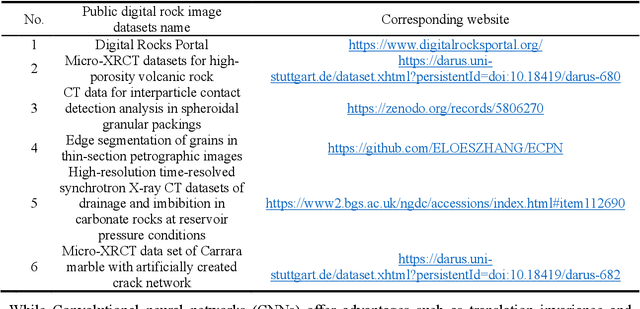
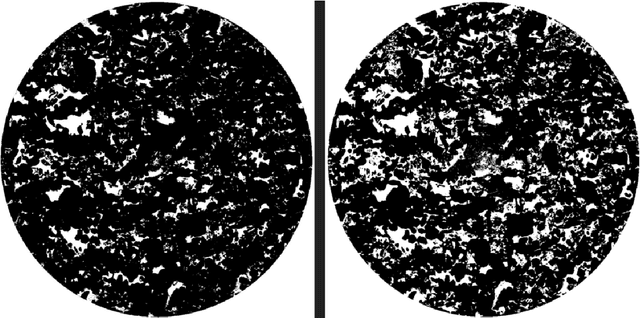


Abstract:In digital rock physics, analysing microstructures from CT and SEM scans is crucial for estimating properties like porosity and pore connectivity. Traditional segmentation methods like thresholding and CNNs often fall short in accurately detailing rock microstructures and are prone to noise. U-Net improved segmentation accuracy but required many expert-annotated samples, a laborious and error-prone process due to complex pore shapes. Our study employed an advanced generative AI model, the diffusion model, to overcome these limitations. This model generated a vast dataset of CT/SEM and binary segmentation pairs from a small initial dataset. We assessed the efficacy of three neural networks: U-Net, Attention-U-net, and TransUNet, for segmenting these enhanced images. The diffusion model proved to be an effective data augmentation technique, improving the generalization and robustness of deep learning models. TransU-Net, incorporating Transformer structures, demonstrated superior segmentation accuracy and IoU metrics, outperforming both U-Net and Attention-U-net. Our research advances rock image segmentation by combining the diffusion model with cutting-edge neural networks, reducing dependency on extensive expert data and boosting segmentation accuracy and robustness. TransU-Net sets a new standard in digital rock physics, paving the way for future geoscience and engineering breakthroughs.
Flashlight Search Medial Axis: A Pixel-Free Pore-Network Extraction Algorithm
Aug 05, 2023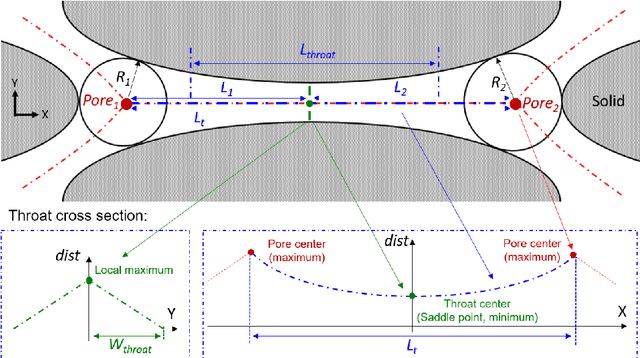
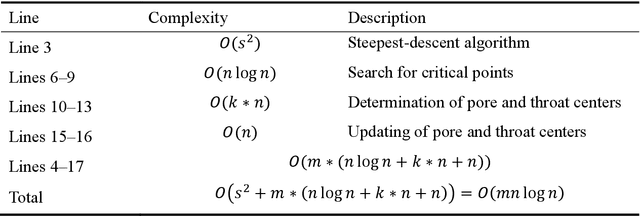
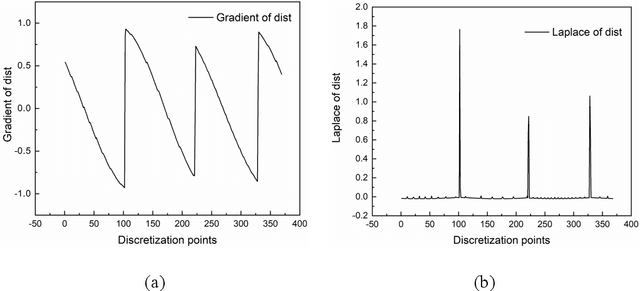
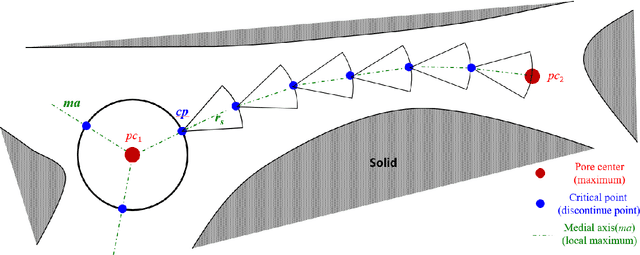
Abstract:Pore-network models (PNMs) have become an important tool in the study of fluid flow in porous media over the last few decades, and the accuracy of their results highly depends on the extraction of pore networks. Traditional methods of pore-network extraction are based on pixels and require images with high quality. Here, a pixel-free method called the flashlight search medial axis (FSMA) algorithm is proposed for pore-network extraction in a continuous space. The search domain in a two-dimensional space is a line, whereas a surface domain is searched in a three-dimensional scenario. Thus, the FSMA algorithm follows the dimensionality reduction idea; the medial axis can be identified using only a few points instead of calculating every point in the void space. In this way, computational complexity of this method is greatly reduced compared to that of traditional pixel-based extraction methods, thus enabling large-scale pore-network extraction. Based on cases featuring two- and three-dimensional porous media, the FSMA algorithm performs well regardless of the topological structure of the pore network or the positions of the pore and throat centers. This algorithm can also be used to examine both closed- and open-boundary cases. Finally, the FSMA algorithm can search dead-end pores, which is of great significance in the study of multiphase flow in porous media.
Acceleration of the NVT-flash calculation for multicomponent mixtures using deep neural network models
Jan 27, 2019



Abstract:Phase equilibrium calculation, also known as flash calculation, has been extensively applied in petroleum engineering, not only as a standalone application for separation process but also an integral component of compositional reservoir simulation. It is of vital importance to accelerate flash calculation without much compromise in accuracy and reliability, turning it into an active research topic in the last two decades. In this study, we establish a deep neural network model to approximate the iterative NVT-flash calculation. A dynamic model designed for NVT flash problems is iteratively solved to produce data for training the neural network. In order to test the model's capacity to handle complex fluid mixtures, three real reservoir fluids are investigated, including one Bakken oil and two Eagle Ford oils. Compared to previous studies that follow the conventional flash framework in which stability testing precedes phase splitting calculation, we incorporate stability test and phase split calculation together and accomplish both two steps by a single deep learning model. The trained model is able to identify the single vapor, single liquid and vapor-liquid state under the subcritical region of the investigated fluids. A number of examples are presented to show the accuracy and efficiency of the proposed deep neural network. It is found that the trained model makes predictions at most 244 times faster than the iterative flash calculation under the given cases. Even though training a multi-level network model does take a large amount of time that is comparable to the computational time of flash calculations, the one-time offline training process gives the deep learning model great potential to speed up compositional reservoir simulation.
 Add to Chrome
Add to Chrome Add to Firefox
Add to Firefox Add to Edge
Add to Edge